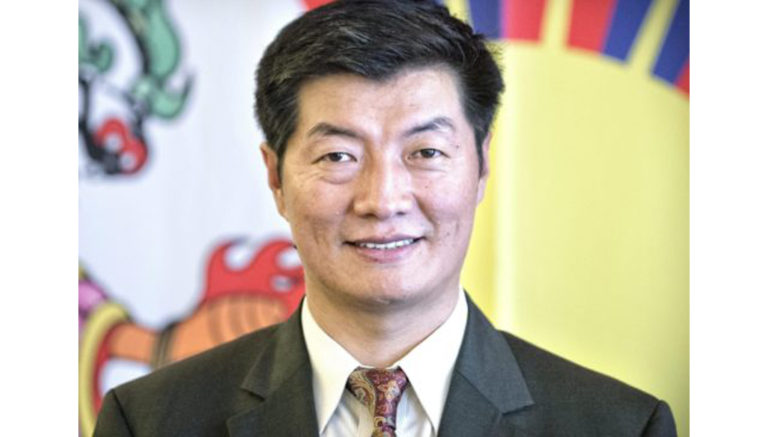Business Standard, 28 February 2018 Read original story here
His salary is “less than that of an Indian postman”, but it is his task to communicate his community’s desire for liberty across the globe. And Lobsang Sangay, the 49-year-old Central Tibetan Administration (CTA) President, has a packed agenda, including convincing Beijing to have dialogue with the Tibetans on their rights.
“The current year is a year to engage, educate and empower ourselves and the movement,” the political successor to the Dalai Lama, the Nobel laureate and global face of the Tibetan movement, told IANS in an interview here. It is also significant as March 31 will mark the beginning of the 60th year of the Dalai Lama stepping on Indian soil.
Though he has returned to his second home where he was born and brought up after spending 15 years at Harvard University, the financial constraints don’t really matter.
“I am getting a salary less than an Indian postman,” Sangay told IANS.
“I am here to lead a movement that campaigns globally for rights of my brothers and sisters, both in exile and Tibet,” said the democratically-elected CTA President — a position often referred to as Prime Minister of the Tibetan government-in-exile
Sixty years ago, some 80,000 Tibetans, along with their spiritual leader the Dalai Lama, left Lhasa after a failed uprising against Communist rule over Tibet and fled to India. The Tibetan exile administration, called the CTA, is based in this northern Indian hill town, where the spiritual leader also lives.
Sangay, who normally dons a achuba — a loose cloak worn by both Tibetan men and women — believes education is the most potent and realistic investment and a tool.
He took the oath of office for his second consecutive term in May 2016.
China, however, doesn’t recognise his government-in-exile and hasn’t held any talks with the Dalai Lama’s envoys since January 2010 to resolve the Tibetan issue.
“In the past six-and-a-half years, I have been to almost all the Tibetan settlements across India, North America and Europe. Our basic purpose is to educate our younger generation — the more skilfully we educate them, the more successfully we will develop strong foundations for the future,” Sangay said.
With the Dalai Lama stepping down from diplomacy and active politics, the elected leader of Tibetan people, also known as Sikyong, has acquired added stature.
Sangay normally attends office daily from 8 a.m. to 8 p.m. After finishing his work, he informally interacts with the local Tibetan communities from his two-bedroom apartment here. His cabinet meets twice a week — every Tuesday and Friday, even in his absence.
Born in 1968 in India, Sangay pursues the Dalai Lama’s advocacy of genuine autonomy for the people of Tibet.
“We do believe in the middle-way approach that international leaders and even many Chinese intellectuals support,” he said. “As long as human rights violations continue, there will be resistance from our people in Tibet.“
“I hope China will accept dialogue as the only way to resolve the issue peacefully”.
The Tibetan administration is launching a round-the-year campaign in India on March 17 from Arunachal Pradesh to reach out to the Indian community through “Thank You India” events.
The spiritual leader entered India on March 31, 1959, through Arunachal Pradesh, along with his followers.
“It also marks 60 years of Tibet under China which is a sad and tragic chapter of Tibet’s history. However, the last 60 years of the Tibetan community in exile has also been a story of success,” Sangay said.
He jokingly referred the Tibetan movement as “the first and original product of India’s ‘Make in India’ initiative”.
Expressing gratitude, he said: “His Holiness the Dalai Lama calls himself as a ‘son of India’ because he has survived on the nutritious Indian dal-roti and also because his mind is filled with the rich knowledge of ancient India.“
Around 140,000 Tibetans now live in exile, over 100,000 of them in different parts of India. Over six million Tibetans live in Tibet.
(Vishal Gulati can be contacted at vishal.g@ians.in)
–IANS

